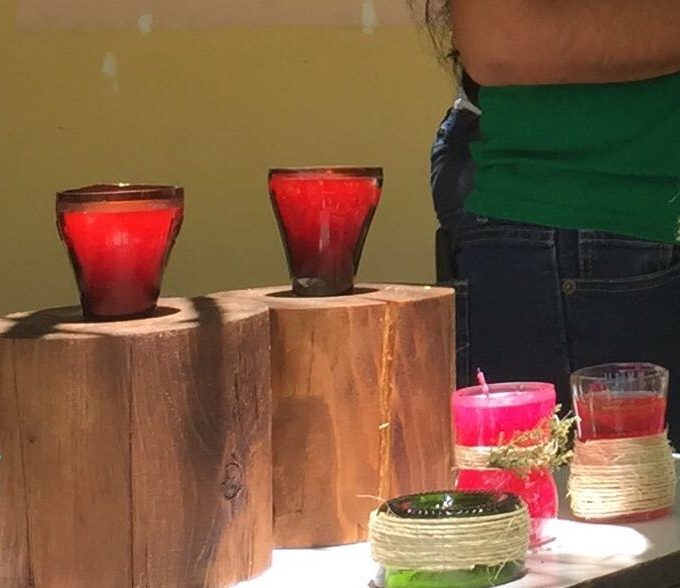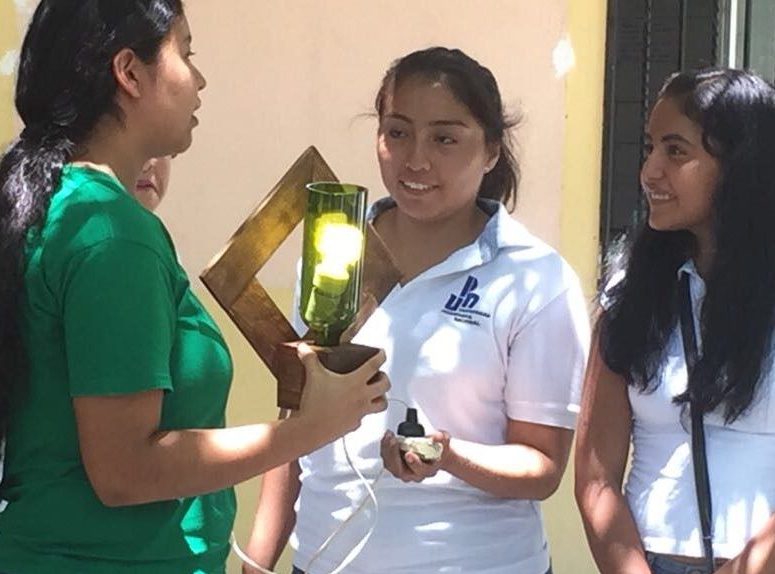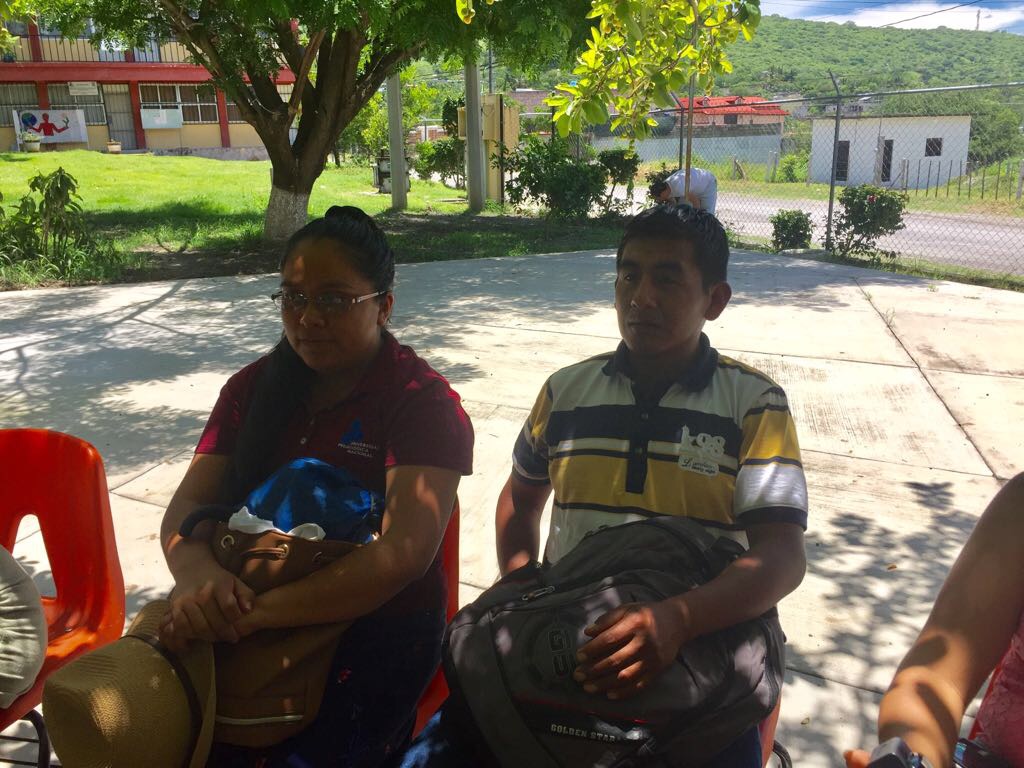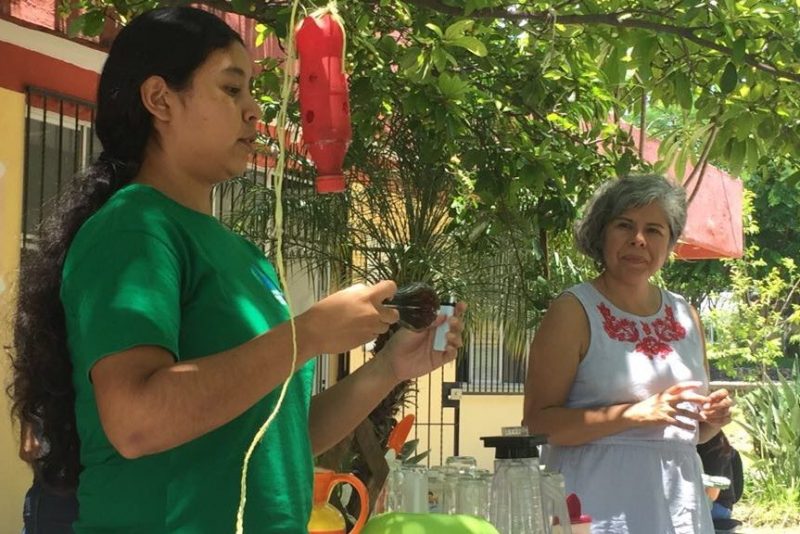Por Luisa Montes (Ciudades Verdes)
English follows
Xac Ni Té Abarca, estudiante de UPN Galeana se preguntó hace ya cinco semestres qué podía hacer para evitar los riesgos y la contaminación que las botellas de vidrio representan no solo para su comunidad sino para las sociedades en general cuando son arrojadas a tiraderos de basura o abandonadas en las calles sin precaución alguna.

Así que se puso a investigar y encontró que pese que aunque el vidrio no representa un agente altamente contaminante en si mismo, si implica riesgos al ser provocador de accidentes que pueden ir de leves a altamente graves y que al no ser atendidas adecuadamente multiplican los riesgos de la salud; por otra parte, el proceso para reciclar el vidrio requiere del uso de solventes que inevitablemente van a dar a los causes naturales de agua provocando daños a la flora y la fauna marina y también la erosión de suelos entre otros impactos.
Por ello, le pareció pertinente ejecutar acciones para la reutilización de las botellas de vidrio a través del cortador de vidrio que fue construido por ella y por su padre quien se interesó en la iniciativa, utilizaron materiales cercanos como trozos de madera, de ladrillos, una resistencia y la reutilización de un cable; este cortador rústico les permite convertir las botellas de vidrio en artículos de uso doméstico como vasos, tazas, veladoras, lámparas y muchas otras cosas que han surgido de la creatividad de quienes se acercan a aprender sobre el cortador de vidrio.

También construyeron un horno rústico que eleva la temperatura del vidrio y permite moldearlo para crear las más diversas, útiles e innovadoras piezas. Esto tiene por propósito compartir sus aprendizajes para ofertar opciones de mejora a la economía de las familias de la comunidad empleando una estrategia que a través del reuso del vidrio reduce el impacto de las botellas a la intemperie y en cambio las convierte en artículos de uso cotidiano. Por ello han participado con su cortador de vidrio en jornadas comunitarias de emprendimiento social orquestadas por el ayuntamiento y han compartido su proceso con los miembros de la comunidad UPN
– Como agentes comunitarios -, dice Xac Nic Té, – es nuestra tarea acercar iniciativas a los miembros de la comunidad que favorezcan su economía y bienestar pero lo mejor, es que estas acciones promueven la convivencia y son muy divertidas -.

Este reto provocó la investigación acción, para avanzar, preguntaron, indagaron, experimentaron y aprendieron al tiempo que generaban una alternativa de sustentabilidad donde se demuestra que el reuso de los residuos sólidos es una posibilidad generosa que además motiva la creatividad, la participación, la economía y el trabajo en favor de la comunidad y que por otro lado les han llevado a superar el desafío de aprender sobre el uso de herramientas, los principios de la electricidad, la maleabilidad del vidrio y muchas otras cosas más. Cinco semestres de trabajo continuo han dado buenos resultados, sin embargo el propósito es seguir aprendiendo para perfeccionar este cortador de vidrio.
Glass Reuse
By Luisa Montes (Ciudades Verdes)
Translation by April Obregon
Xac Ni Té Abarca, a student from UPN Galeana, wondered five semesters ago, what she could do to prevent the risks and the pollution that glass bottles represent, not only for her community but for societies in general, when they are thrown to garbage dumps or abandoned in the streets without any precaution.

So she started to investigate and found that although glass does not represent a highly polluting agent in itself, it does imply risks by being the cause of accidents that can go from mild to highly serious and by not being taken care of, multiplies the risks of health; on the other hand, the process of glass recycling requires the use of solvents that will inevitably end up in the watercourses causing damages to the flora and the marine fauna and also the erosion of floors, among other impacts.
For this reason, she found it relevant to execute actions for the reusing of glass bottles through the glass cuter she and her father, who became interested in the initiative, made. They used materials like pieces of wood, bricks, a resistance and a reused cable; this rustic cutter allows them to transform the glass bottles into household items such as glasses, cups, candles, lamps and many other things that have resulted of the creativity of those who went to learn about the glass cutter.

They also built a rustic oven that elevates the temperature of the glass and allows them to mold it to create more diverse, useful and innovative pieces. This has the purpose of sharing their learning to offer options to improve the economy of the families of the community using a strategy that ,through the reuse of glass, reduces the impact of the bottles thrown outdoors and instead makes them articles of daily use. For this reason, they have participated with their glass cutter in community entrepreneurship days orchestrated by the city council and have shared their process with the members of the UPN community.
-As community agents-, says Xac Nic Té- it is our duty to bring initiatives to members of the community that favor their economy and wellbeing but the best thing is that these actions promote coexistence and are very fun-.

This challenge triggered research-action, to advance, they asked, investigated, experimented and learned while generating an alternative of sustainability where it is shown that the reuse of solid waste is a generous possibility that also motivates creativity, participation, economy and work in favor of the community and that on the other side has led them to overcome the challenge of learning about the use of tools, the principles of electricity, malleability of glass and many other things. Five semesters of continuous work have produced good results, however the purpose is to continue learning to perfect this glass cutter.




